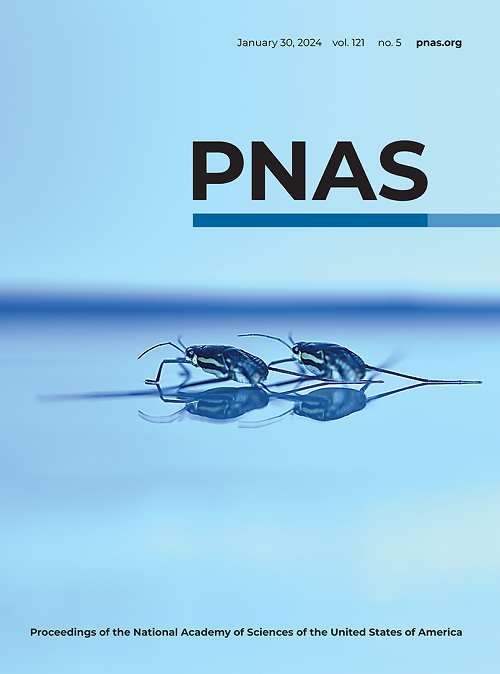空气-水界面上肽键的加速形成
IF 9.4
1区 综合性期刊
Q1 MULTIDISCIPLINARY SCIENCES
Proceedings of the National Academy of Sciences of the United States of America
Pub Date : 2025-03-21
DOI:10.1073/pnas.2501323122
引用次数: 0
摘要
本文章由计算机程序翻译,如有差异,请以英文原文为准。
Accelerated peptide bond formation at air–water interfaces
Peptides and proteins, essential components of living organisms, are composed of amino acids linked by peptide bonds. However, the mechanism of peptide bond formation during the prebiotic era remains unclear. In this study, advanced Born–Oppenheimer molecular dynamics (BOMD) simulations were used to investigate the mechanisms and kinetics of peptide bond formation at air–water interfaces using diglycine, the simplest dipeptide, as a model molecule. The results show that peptide bonds can be rapidly formed via a unique isomerization-then-OH − -elimination pathway. In this mechanism, the diglycine initially isomerizes into its acidic form at the air–water interface, followed by a reaction that releases an OH − anion rather than the previously hypothesized H 2 O. The free-energy barriers for the interfacial pathway with the assistance of an interfacial electric field are much lower than those in the gas phase by >25 kcal/mol. Further calculations suggest that this mechanism can be extended to the formation of some larger peptides, such as tetraglycine. This pathway offers insights into the origin of life and could inform the development of methods for peptide synthesis.
求助全文
通过发布文献求助,成功后即可免费获取论文全文。
去求助
来源期刊
CiteScore
19.00
自引率
0.90%
发文量
3575
审稿时长
2.5 months
期刊介绍:
The Proceedings of the National Academy of Sciences (PNAS), a peer-reviewed journal of the National Academy of Sciences (NAS), serves as an authoritative source for high-impact, original research across the biological, physical, and social sciences. With a global scope, the journal welcomes submissions from researchers worldwide, making it an inclusive platform for advancing scientific knowledge.

 求助内容:
求助内容: 应助结果提醒方式:
应助结果提醒方式:


